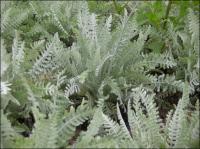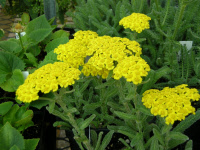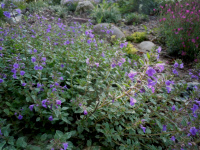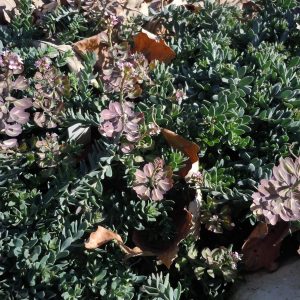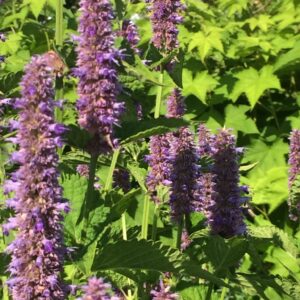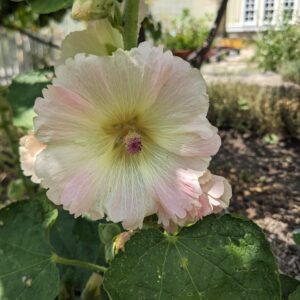Drought, Xeric & Dry Soil Plants
Showing 1–8 of 132 results
-
Achillea clypeolata Balkan yarrow
Erect, fern-like clumps of striking silver foliage. Mustard yellow platter flowers in summer.
OUT OF STOCK – EMAIL FOR AVAILABILITY
Erect, fern-like, thick clumps of striking silver foliage. Mustard yellow platter flowers in summer. I first saw this plant at the harbor garden in Port Washington about 6 AM one fall morning. The foliage was so arresting it stopped me in my tracks.
Size: 18" x 24"
Care: sun in well-drained to moist well-drained soil. Deer and drought tolerant
Native: BalkansCollected before 1804. The Balkan yarrow is known to attract butterflies with its Yellow Flowers.
-
Achillea filipendulina Fernleaf Yarrow Z 3-9
June-July clumps of mustardy yellow platters on erect stems
June-July clumps of mustardy yellow platters on erect stems
Size: 3’-4’ x 30”
Care: Full sun. Dry, well-drained soil. Heat and drought tolerant, stands up to wind.
Native: Caucasus, Iran, Afganistan.
Wildlife Value: Deer resistant.Achillea named for Achilles, hero of Homer’s Iliad, used Achillea millefolium to stop bleeding of his wounded soldiers at the siege of Troy. Achilles learned about the uses of Achillea from Chiron, the Centaur. A. filipendulina collected by French explorer and botanist Joseph Tournefort (1656-1708) in the Levant c. 1700.
-
Achillea tomentosa Woolly yarrow Z 4-8
Lemony colored platter-like flower heads from June to July atop a spray of wooly foliage.
OUT OF STOCK
Lemony colored platter-like flower heads from June to July atop a spray of wooly foliage.
Size: 8” x 12”
Care: Full sun in moist to dry soil
Native: Southern to Eastern Europe
Awards: Royal Horticultural Society Award of Garden Merit.Grown in garden of Tradescant the Elder’s (1570-1638) in 1630. ”A splendid plant with fern like foliage and rich golden-yellow flower heads.” H.H. Thomas, 1915. Philip Miller’s The Gardener’s Dictionary, describes this as having “finely cut” leaves with flowers “of a bright yellow colour, and continue long in beauty.” (1768)
Achillea named for Achilles, hero of Homer’s Iliad, who used a different Achillea to stop his soldiers’ bleeding at the siege of Troy. Tomentosa means “furry” or “covered in hairs”, referring to the leaves of this plant.**LISTED AS OUT OF STOCK BECAUSE WE DO NOT SHIP THIS ITEM. IT IS AVAILABLE FOR PURCHASE AT OUR RETAIL LOCATION.
-
Acinos alpinus syn. Calamintha alpina syn Clinopodium alpinus
Reddish purple flowers all summer and fall
OUT OF STOCK
Reddish purple flowers bloom on cushions all summer and fall – “long and late season of bloom.” Foster
Size: 4-6”x 8”
Care: sun in well-drained soil
Native: European mountains - Alps and PyreneesCollected before 1753.
Common name for its aromatic foliage. It has been used to reduce excessive sweating and fever. Also, leaves may be brewed for tea. -
Aethionema cordifolia Lebanon stonecress Persian candytuft Z 4-8
Short subshrub with lovely, tiny blue-green leaves on upright stems with terminal clusters of pale pink blooms in spring. Perfect for rock gardens and front of the border.
OUT OF STOCK
Aethionema cordifolia Lebanon stonecress, Persian candytuft Z 4-8
Short subshrub with lovely, tiny blue-green leaves on upright stems with terminal clusters of pale pink blooms in spring. Perfect for rock gardens and front of the border.Size: 6-8” x 12-15”
Care: sun in well-drained soil. Sheer back after blooming to keep compact and rebloom.
Native: Lebanon and possibly Caucasus on chalky summits.Collected before 1841. Foster: “…when planted in quantity does wonders for mass effect in the rock garden or alpine lawn.” January 1876 issue of The Garden called these “very attractive dwarf rock garden plants.” Aethionema from aitho meaning scorch and nema for filament.
-
Aethionema grandiflorum Persian stonecress Z 5-8
Bushy, low growing perennial with blue-green leaves and spikes of fragrant pink to lavender flowers, June-July
OUT OF STOCK
Bushy, low growing perennial with blue-green leaves and spikes of fragrant pink to lavender flowers, June-July
Size: 6-12” x 12-18”
Care: full sun in well-drained soil. Drought tolerant.
Native: Iran, Iraq, Caucasus, Turkey
Wildlife Value: attracts honeybees & other pollinators, Deer & Rabbit resistant.
Awards: Award of Garden Merit from the Royal Horticultural SocietyShort-lived perennial, but self-seeds where happy. Described in 1849 by Pierre Edmond Boissier and Rudolph Friedrich Hohenacker.
-
Agastache foeniculum Anise hyssop Z 4-8
Purplish-blue spikes from July to October. Fragrant foliage.
Purplish-blue spikes from July to October. Fragrant foliage.
Size: 2-3' x 12"
Care: Full sun in well-drained soil, heat and drought tolerant.
Native: North America, Wisconsin native.
Wildlife Value: Skipper butterflies and Rusty patched Bumble Bees love Anise hyssop’s nectar, deer resistant.The name Agastache is from Greek agan and stachys meaning much like an ear of wheat referring to the shape of the flower spike. Anise hyssop leaves were used by American Americans of the Missouri River region to make tea and as a sweetener in cooking. For Cheyenne it relieved chest pain due to coughing or to a dispirited heart. Listed as an aromatic herb in McMahon’s 1805 book.
-
Alcea rosea Hollyhock BIENNIAL
Early to late summer spikes of single platters - mixed colors. The classic cottage garden flower.
Early to late summer spikes of single platters – mixed colors. The classic cottage garden flower.
Size: 5-8' x 24"
Care: Sun in moist well-drained to well-drained soil. Drought tolerant
Native: West Asia
Wildlife Value: Butterfly plant, host for Painted Lady butterfliesCultivated in China for thousands of years where it symbolized the passing of time. They cooked the leaves for a vegetable and also ate the buds. Transported from Middle East to Europe by the Crusaders and introduced to England by the 1400’s. Culpepper, a 17th century English herbalist, claimed the plant could be used to cure ailments of the “belly, Stone, Reins, Kidneys, Bladder, Coughs, Shortness of Breath, Wheesing, … the King’s Evil,, Kernels, Chin-cough, Wounds, Bruises, Falls. . . (and) Sun-burning.” Both single and double forms grew in England by the time of Parkinson (1629). Parkinson said they came “in many and sundry colours.” John Winthrop Jr. introduced the 1st hollyhock to the New World in the 1630’s.

